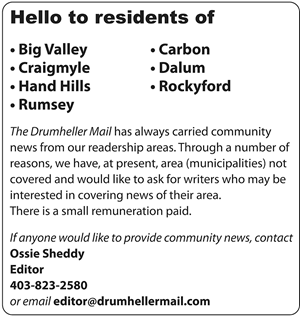Herb McLane is running for Wheatland County council for Division 7 and is hoping to succeed Ben Armstrong after 29 years of service to the citizens of Division 7.
McLane has owned a small property in the Hussar area since the early 1990s, resided in the community for nearly all of those years. He is involved in several local community activities including minor hockey and minor baseball, slow-pitch, and 4-H. He has a grade six daughter, Sierra, who attends Wheatland Crossing School.
Following formal studies in agriculture with a primary focus on animal science, he pursued a career with nonprofit and for-profit agricultural organizations with a provincial, national and global reach. His specializations include agricultural policy, strategic planning, government relations, governance and operations, and brand development, communications, marketing, and event management.
“I value the range of my experiences, which form a strong professional foundation, and I will draw upon those experiences in the role of Councillor for Division 7,” he said.
His work on animal health issues including BSE management and livestock compensation resulted in the development of a federal policy framework for increasing the value of purebred and commercial cattle ordered depopulated. This work positively impacted the cattle industry across Canada. His work also includes international market access development and the development, promotion, and sale of animal genetics and beef.
Throughout the years, he has held leadership positions including President of the Canadian Agricultural Hall of Fame Association and Canadian Western Agribition, and also Chair of the International Committee of Calgary Stampede.
The four themes of the 2018 Economic Development Report for Wheatland County are Community Development, Investment Readiness, Industry Development, and Tourism - these are important milestones in focusing our attention in Wheatland County as the reports recommended the county needs to be more ‘business ready’. They require monitoring, measuring, and updating in careful stewardship of the many natural and economic assets of the County.
Road maintenance and construction are priorities, as are budgets and careful and prudent investments, and resultant tax rates. Enhancements to utilities, particularly Broadband/Internet services need to continue.

















